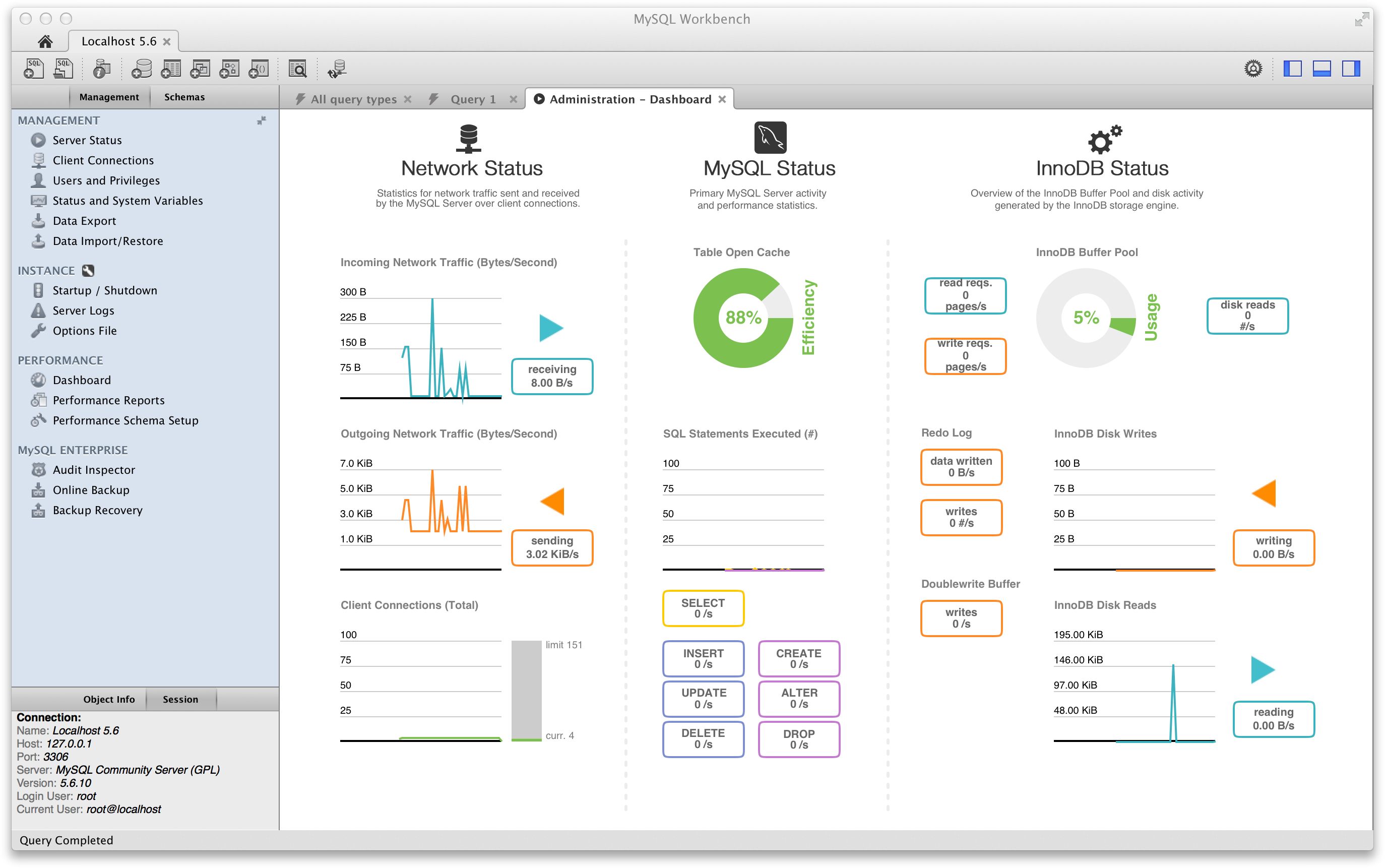
- #My sql server for mac install
- #My sql server for mac password
- #My sql server for mac Pc
- #My sql server for mac mac
- #My sql server for mac windows
#My sql server for mac mac
Unfortunately if you want to have MySQL server installed on your Mac this is not always as simple as everything else.
#My sql server for mac password
Replace username with the username you wish to create, x.x.x.x with the IP address you wish to connect from, and password with a suitable password.Mac OS X has a great design and a lot of tasks are really easy to do.

#My sql server for mac Pc
If you can’t use your root account remotely, you’ll need to access your server’s shell using the mysql command via a remote SSH connection or by directly accessing the PC or server hosting the server. You’ll need to have the ability to sign into your MySQL server remotely. It won’t be able to make more serious changes, such as accessing other database data, creating new user accounts, etc. This account will have limited access to your MySQL server, allowing it to interact with only selected databases. As this level of access is unsafe, you may prefer to create a more restricted account for accessing your MySQL database. Allowing Remote User Access to a MySQL Databaseīy this point, you should be able to connect to your MySQL server remotely using your server’s root user account or another user account with elevated privileges. You can then create a suitable user account by following the steps below. If this doesn’t work, connect to the server or PC hosting your MySQL server using SSH (or access it directly) using these steps and using the -h localhost argument. Replace X.X.X.X:XXXX with your remote server IP address and port number (eg.
#My sql server for mac install
sudo apt install mysql) to install the necessary packages. Mac users can install MySQL using homebrew from the terminal ( brew install mysql), while Linux users can use their local app repository (eg. If you’re running Windows, you will need to make sure that MySQL is installed locally before you begin. You can do this using the mysql command ( mysql.exe on Windows) from a terminal or PowerShell window. Connecting to a Remote Server Using MySQLĪfter configuring your MySQL database to allow remote connections, you’ll need to actually establish a connection to it.

You may also need to configure your local network router to open the necessary blocked ports to allow inbound and outbound connections to your database. If you have trouble connecting, repeat these steps above, making sure to create a new outbound rule in your firewall settings using the same details (port 3306, etc). Replace X.X.X.X with the IP address for the device you wish to allow MySQL connections from, and replace YYYY with the matching port value from your MySQL configuration file (eg. Open a terminal or SSH connection and type sudo iptables -A INPUT -p tcp -s X.X.X.X –dport YYYY -j ACCEPT.You can configure it by following the steps below. Many Linux servers use iptables as the default firewall utility. Mac firewalls are disabled by default, so you shouldn’t need to complete any additional steps here.
#My sql server for mac windows
The steps to configure this will vary, depending on whether you’re running MySQL on Windows or Linux. Most servers and PCs use a firewall to block connections unless access to a specific port is granted. However, connections will still be blocked by your device or network firewall. Configuring Your FirewallsĪt this stage, your MySQL database should allow remote connections from devices using the IP address you set as the bind-address value in your MySQL configuration file (or from all devices if you set this value to 0.0.0.0 instead). If you can’t reload your configuration, restart your server and reload MySQL manually (if necessary) instead. If you’re unsure of the correct service name on Windows, type net start to find it. On Linux, type sudo nano /etc/mysql//mysqld.cnf into a terminal or SSH window to edit this file using the nano editor (assuming your MySQL database is in the default location).

So, you will need to establish this connection first before you can proceed. In that case, you won’t be able to configure your MySQL database to allow remote connections directly unless your root mySQL account already allows remote connections. Suppose you don’t have remote access to your server via SSH (for example).


 0 kommentar(er)
0 kommentar(er)
